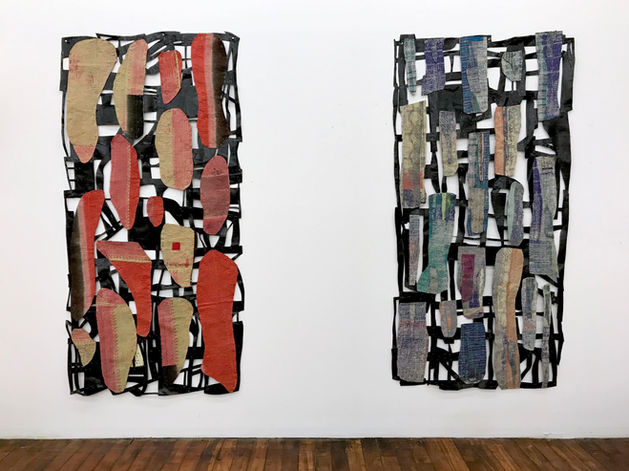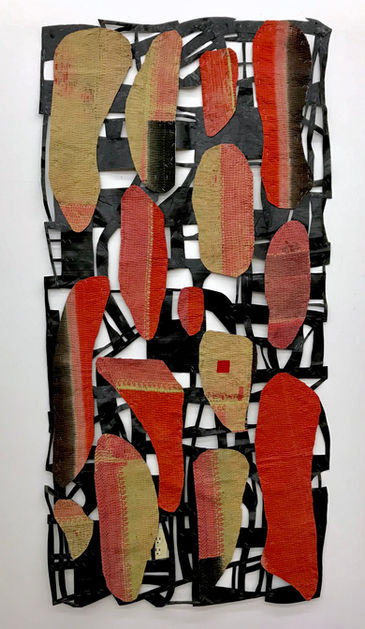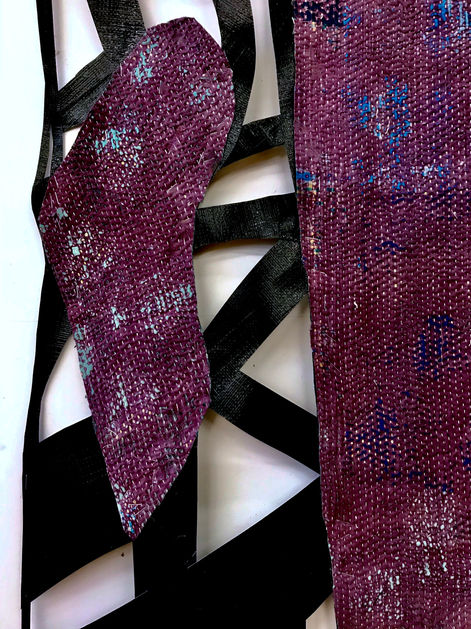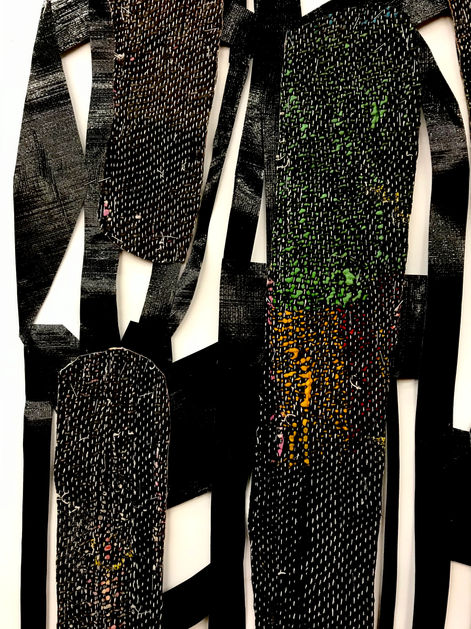
Artist Art Historian Curator Writer
Click on image for full screen view
This series of wall collages began in January 2020.
The immediate inspiration was the Korean Bojagi tradition of piecing cloth together from old fabric remnants, usually rectilinear pieces. I started with rectilinear pieces of Kantha cloth, but soon began to also cut the cloth into uneven, biomorphic shapes. The background structure - the black lines and shapes - is made out of strips and sections of industrial, woven, black plastic tarp. For me the background works as a kind of gestural calligraphy.
All parts and sections are fastened with black staples. The overall image depends on, and is therefore compositionally restricted by, it being able to support itself once suspended on a wall.
The size of each work is approximately 6' 6" x 3' 3"
There are references in my work to European and Danish 19th and 20th century landscape painting and to European 1950s abstraction, and once I had worked on the series for some time I realized that I was also drawing on the imagery of Danish Neolithic flint stone tools, and on how they are displayed in drawers in history museums.
The title of a work arrives while I am working on it, or after it is finished. Usually referencing something that I was emotionally or spiritually engaged in while it was created.
The Kyoto School, I-III
The Kyoto School of Philosophy was a group of early to mid 20th century Japanese philosophers who were influenced by, and continued, the conceptual framework of Continental European Philosophy, especially Phenomenology and Martin Heidegger.
Unlike the Continental philosophers who worked within the framework of Christian thought, the Japanese philosophers approached ideas and concepts from within a Zen Buddhist and Shintoist framework. In this series I created the shapes for the first work intuitively, and then recreated the same shapes (more or less) for the other two, while using different Kantha patterns. The black lines and shapes are related in all three works, but in II and Ill they are referencing and improvising the lines of the first.
Frankl’s Coat, I-IV
The series is named for the Austrian psychotherapist and writer, Victor Frankl, who was deported to Auschwitz during World War Il. Fearing he would lose any valuables once he arrived, he had sewn the pages of a manuscript on Logotherapy (a method of analysis he had started to develop) into the lining of his coat, in the hope the manuscript would survive. After arrival, however, everybody was ordered to take their clothes off, and Frank never saw his coat again.

















































































